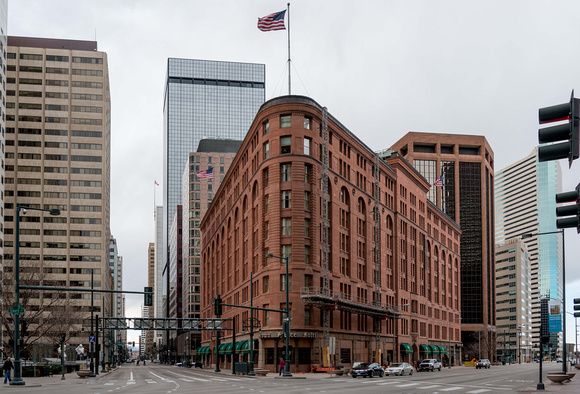The Brown Palace Hotel - named after Henry Brown. Not the colour of the stone!
The distinguished Brown Palace Hotel amp; Spa has been open every day since Aug. 12, 1892. Many changes have taken place over the years, but one thing remains the same - the grandeur and grace of one of Denver's most elegant hotels.
The story of The Brown Palace Hotel begins in a setting ripe for entrepreneurship. It was the late 1800s in Denver, Colo., and people from all over the country were still flocking to the West, seeking their fortunes in gold and silver. Everyone stopped in Denver, either on their way to or from the mountains. Some settled; some moved on, but all needed a place to stay.
Henry Cordes Brown, a carpenter-turned-real-estate entrepreneur from Ohio, came to Denver in 1860 after a number of adventures in California, Peru, Nebraska and St. Louis, Missouri. In Denver, Brown purchased several acres of land, including a triangular plot at the corners of Broadway, Tremont and 17th street, where he grazed his cow. Brown made a name for himself by donating land for the State Capitol building, and by giving the first $1,000 for the founding of the city's first library.
Henry Brown had made a fortune selling off the rest of his land on Capitol Hill and no expense was spared for his "Palace Hotel." Architect Frank E. Edbrooke was hired to design the hotel. Like Brown, Edbrooke played a significant role in Denver's history, designing several landmark buildings, including Central Presbyterian Church and the Masonic Temple Building, among others.
Work on The Brown Palace began in 1888. Edbrooke designed Brown's hotel in the Italian Renaissance style, using Colorado red granite and Arizona sandstone for the building's exterior. For a finishing touch, artist James Whitehouse was commissioned to create 26 medallions carved in stone, each depicting a native Rocky Mountain animal. The hotel's "silent guests" can still be seen between the seventh floor windows on the hotel's exterior.
For the interior, Edbrooke designed an atrium lobby, with balconies rising eight floors above ground, surrounded by cast iron railings with ornate grillwork panels. No one knows for sure whether it was done intentionally, but two of the grillwork panels were installed - and remain - upside down. Edbrooke imported onyx from Mexico for the lobby, the Grand Salon (now the Onyx Room) on the second floor, and the eighth floor ballroom. The hotel was hailed as the second fire-proof building in America. No wood was used for the floors and walls, which were instead made of hollow blocks of porous terracotta fireproofing.
After an expenditure of $1.6 million - a remarkable sum for the time - and another $400,000 for furniture, The Brown Palace Hotel opened on Aug. 12, 1892. It had 400 guest rooms (compared to 241 today) that rented for between $3 and $5 a night.


